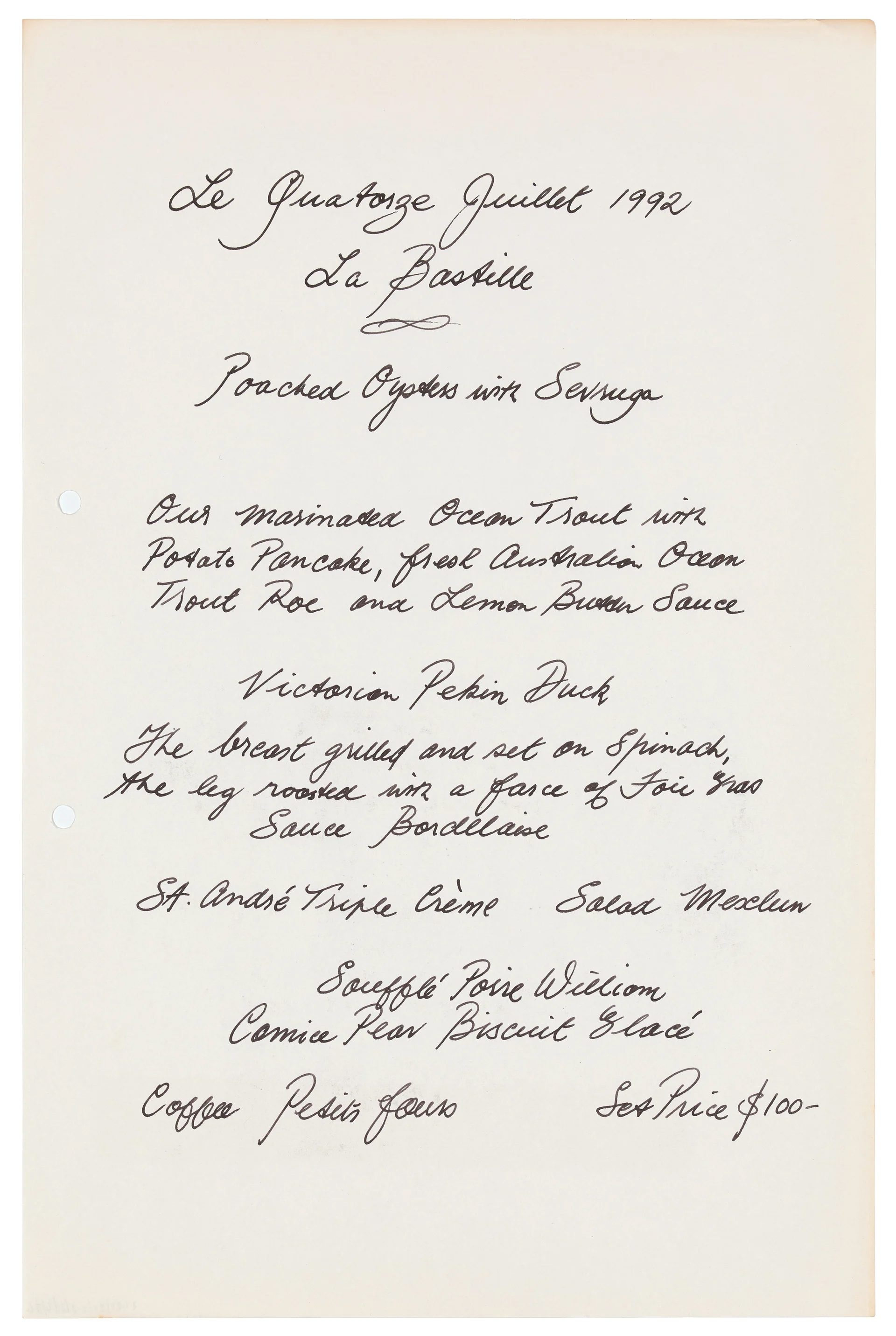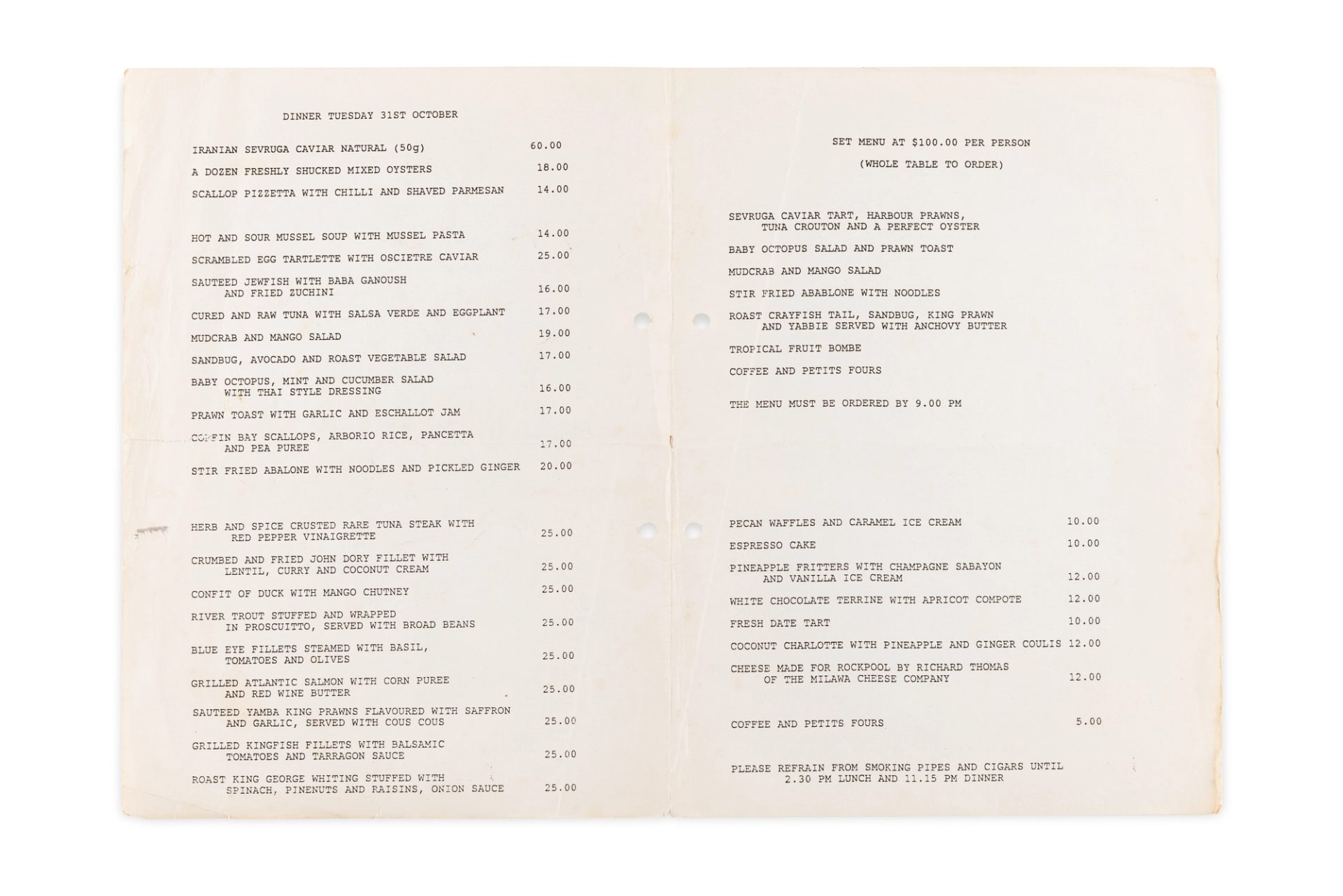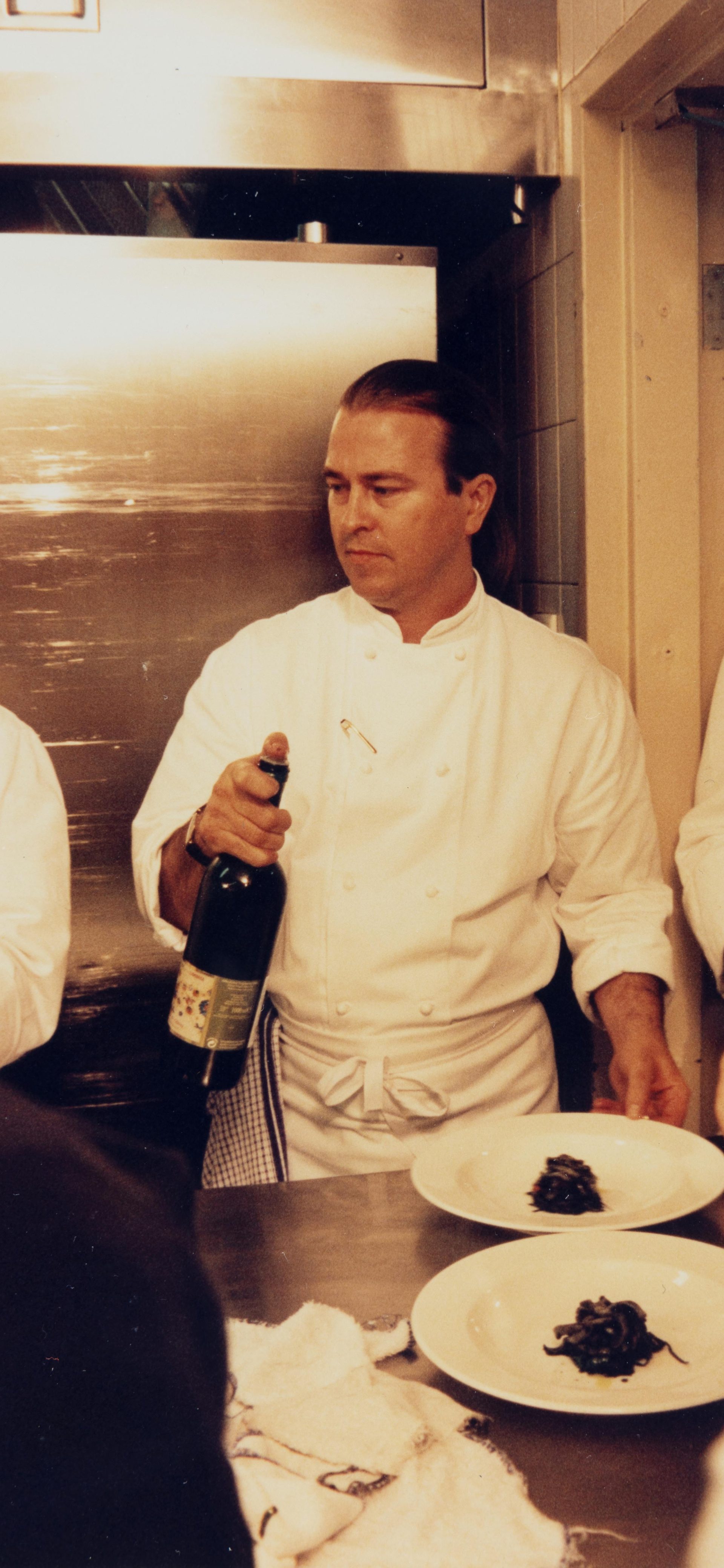Another memory to create: Neil Perry

Another memory to create
Neil Perry is probably best known for his restaurant Rockpool — and the kitchen there has produced a generation of influential Australian chefs. In this interview from the Australian Culinary Archive he shares his obsession for produce and describes the rise of modern Australian cuisine which has created many memories for people during his 40-year career.
Julie Gibbs Why did you become a chef?
Neil Perry That was very organic, really. My father was a butcher. We used to have beautiful beef and lamb and a vegetable patch as well as fruit trees, choko vines and passionfruit vines. I’m probably one of the only people that loves curried choko, or choko with butter and pepper, because that’s all I knew, right?
Dad would say, ‘What do you think about that? How’s the taste?’ He’d cook Indian food with onions, garlic, ginger and spices. He loved Chinese cooking and we’d go to Chinese restaurants. He was a mad-keen fisherman, so breakfast when we were on holidays was just black fish, or garfish, or whatever, filleted, floured, pan-fried and on toast.
JG That’s where that produce obsession came from?
NP My whole career of being obsessed with produce was set up without me really realising it. I started front of house, but always loved cooking and reading every book from the three-star chefs, and driven by work ethic, by my parents but also by reading Great Chefs of France. It’s one of those books that diarises the life of a chef, what it’s like to work in a great restaurant, and the commitment.
I think it’s commitment of produce, of craft, to training, commitment to hours — and I didn’t have much interest in not leading. I always thought whether I was at school playing football or whatever I was doing, I was able to get people to follow me on a path.
JG How did you start cooking?
NP I’m 24 and I’m eating at Claude’s [in Sydney] and chatting to Damien and Josephine Pignolet …
JG Not many 24-year-olds were going to eat at Claude’s?
NP No. Well, I always loved good food and I was the manager of Sails at McMahons Point and making tips, making good money. The industry had sort of bitten me then. I was really loving it … So I went and saw Damien and said, ‘Look, I really want to cook.’
JG Tell me about Claude’s when Damien and Josephine had it.
NP A beautiful, small family restaurant with great produce, beautiful French cooking, lovely craft, very intimate. Two or three of us in the kitchen, two on the floor. Josephine was such a beautiful chef, and seeing those two work together, it was really lovely. I remember having a little Noilly Prat on ice before a family meal.
JG So the hospitality was going on behind the scenes as well as out the front?
NP Yes. And it was simpler times in restaurants, of course. Going to Melbourne in 1982 was great; Stephanie’s was another step up. Again, a very personal, family experience. Stephanie and Maurice Alexander were living upstairs with their girls. It was run professionally, a three-hat restaurant, very French provincial food. How to wash a salad properly, cleaning mussels — all of the small details that became very important to me I learned from Stephanie.
JG People on the same journey.
NP Yes. And after a few months I came back to Sydney and worked front of house for Gay Bilson at Berowra Waters Inn for six weeks. There I was explaining the food and talking to the kitchen and doing guéridon service at the table, and it reinforced the fact that what I really wanted to do was be in the kitchen.
At the time it was considered the best restaurant in Australia. I’d eaten at the last service that Tony Bilson cooked there, and it was extraordinary. I still remember the pheasant with salmis sauce, just so beautiful, and the bone marrow en brioche with a red wine butter.



JG So then you became a chef at Barrenjoey House [in Sydney’s Palm Beach]?
NP Yes and in 1984 I went to France and ate at Frédy Girardet’s, Robuchon, Alain Senderens, Pic, La Coupole — incredible places. When I got back, I thought, ‘What am I doing cooking essentially French provincial food in Palm Beach?’
JG Is that what you had been cooking?
NP Chicken en vessie and blue mussel saffron soup, really beautiful things — and sometimes I think I’d love to cook some of that again. But I just thought, ‘What am I doing? I have to bring in more of the things that I love cooking at home that have influenced my life.’ Of course, Chinese has been a major influence, and Thai, Japanese, Korean. Everybody uses gochujang now but I was using it in 1986 because I loved Korean food.
All those things came into a big focus at Barrenjoey. Blue Water Grill was pretty much all that at the beginning, and that’s how Rockpool started as well. It was an expression of where Australian food was at, at the time. There were guys like Phillip Searle, Cheong Liew and then Chris Manfield, David Thompson — we were really influenced by that whole Asian explosion of flavours.
JG Well, you were the ones putting it into your own food, in your own restaurants, folding it in, and helping make Australian food what it is. I’ll never forget Blue Water Grill.
NP It was almost derelict, a reception centre, leaking like a sieve, at Ben Buckler Point at Bondi, right at the end, at the roundabout. And that’s where I completely unleashed Neil Perry, basically. That menu was full of Asian flavours and seafood the way that I wanted to do it. We were flying stuff direct from fishermen. Tiny little kitchen and we were doing 300 covers a night; 250, 300 for lunch. That, for me, was the beginning of me doing 100 per cent the thing that I wanted to do.
JG How do we define that?
NP A few of us were arriving at the junction of, ‘This is what modern Australian cooking is.’ Completely respectful of French technique and French food, but also that we live in a multicultural society, we’re part of Asia. From 1972 on, with Whitlam, and the White Australia policy being thrown out, and the end of the Vietnam War, Australia changed forever. And anyone who lived through that as a young teenager like I was saw Australia changing before their eyes into what it is today.
I love the fact that we’re now recognising that the First Australians have a great food culture, a great culture, there’s 60,000 years of it. And I’ve always pushed the fact that native ingredients come out of the sea and rivers as well.

JG So Blue Water Grill went off? What are you thinking? What are you feeling?
NP It went off like a frog in a sock. It was thrilling. This is 1987, and I’m 30 years old, and I’d worked my whole life to create my own style, I guess.
JG You’ve worked with a generation of chefs and been so influential.
NP Well, thank you, I tried. I suppose what we have done is work with a lot of awesome people and, hopefully, shaped a lot of people. If you look at Kylie Kwong, Mike McEnearney, Ross Lusted, Khan Danis, Mat Lindsay and various others who have been through kitchens at Rockpool — Katrina Ryan, George Sinclair, Lorraine Godsmark and Corey Costelloe — I would hope that I’ve instilled in the guys focus and a belief that suppliers are pivotal to making great restaurants.
When Rockpool started, I had a notion that restaurants are about creating great memories. We’re in the nostalgia business. We get there every day. We start the process, follow it through to the end. We could never rest on our laurels because tomorrow there’s another memory to create. That was what kept us fresh, what kept us evolving.
This interview was first published by The Saturday Paper.
About
Neil Perry is a luminary of Australian hospitality. Known for his passion for outstanding produce and Asian flavours, his confident and distinctive style is to let the produce shine. Neil earned his first Chef Hat in The Good Food Guide at Barrenjoey House at Palm Beach in 1984. Over 40 years he has earned more than 150 Chef Hats in iconic venues such as Rockpool, Rockpool Bar and Grill, Spice Temple, Rosetta and Margaret. Neil continues a long association with Qantas business and first class dining and has just opened Songbird and Bobbie's in Double Bay, NSW.
Julie Gibbs is the curatorial adviser to the Australian Culinary Archive, a major initiative of Powerhouse Museum, collecting and preserving the stories and archives of Australia's leading chefs and producers. In her extensive career in book publishing Julie has given voice to and published works by our chefs, cooks and food writers.
Australian Culinary Archive
Established by Powerhouse in 2020, the Australian Culinary Archive is a living, evolving repository of our food industry: the chefs and cooks, food producers and vendors, writers and photographers, critics and diners whose hunger for innovation has coalesced over the decades into a vital sphere of cultural production. It is a storehouse for oral histories, written records, photographic documentation and unique artefacts that attest to the passion and distinction that typify this vast sector.
Led by Julie Gibbs, who has published a long list of Australian cookbooks in a 35-year career, the Australian Culinary Archive oral history archive brings together voices from across the food industry — from renowned professional chefs to community and household cooks as well as those that support and celebrate them.
More
Powerhouse Food
Powerhouse Food examines food within the context of history and how its connectedness draws together land, creatures, people, roads, factories, markets and waterways, sustaining us and holding our futures.





















